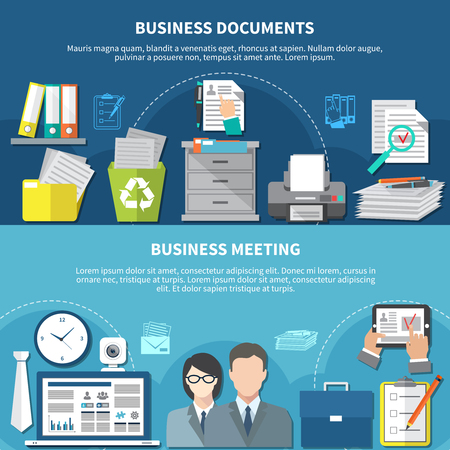Understanding the Foundations of Scalability
When we talk about building a scalable business model in the U.S., it’s all about creating a company that can grow rapidly without losing efficiency or quality. For startups and growing companies, scalability isn’t just a buzzword—it’s essential for long-term success. In this section, we’ll break down what scalability really means and why it should matter to you as an entrepreneur.
What Does “Scalable” Mean?
A scalable business is designed to handle increased demand without needing to drastically increase costs. This means your company can serve more customers, enter new markets, or launch new products smoothly. Scalability often involves using automation to streamline operations, so you’re not constantly hiring more people or adding extra resources every time your business grows.
Why Scalability Matters in the U.S. Market
The U.S. market is highly competitive and full of opportunities. Startups here face fast-moving competitors, tech-savvy customers, and investors who look for sustainable growth. If your business model can’t scale, you risk being left behind. Here are some key reasons why scalability is so important in the American business landscape:
| Reason | Impact on Your Business |
|---|---|
| Competitive Advantage | Outpace rivals by growing faster and more efficiently |
| Investor Appeal | Attract funding from VCs looking for high-growth potential |
| Market Expansion | Easily enter new regions or customer segments |
| Cost Efficiency | Grow revenue faster than expenses with automated processes |
| Customer Satisfaction | Deliver consistent service even as demand increases |
The Role of Process Automation in Scalability
Process automation is one of the main tools that help businesses become scalable. By automating repetitive tasks—like order processing, customer support, or data entry—you free up your team’s time to focus on strategy and innovation. Automation also reduces human error, speeds up workflows, and makes it easier to measure performance as you grow.
2. Identifying Bottlenecks in Your Current Processes
Before you can build a scalable business model with process automation, it’s important to know exactly where your current workflows slow things down. Identifying bottlenecks and manual tasks that hold back your team is the first step toward making your business run smoother and more efficiently.
Why Bottlenecks Matter
Bottlenecks are points in your workflow where things pile up, causing delays and frustration for both your team and your customers. These slow spots often mean people are doing repetitive work by hand or using outdated systems that just can’t keep up as your business grows.
Common Signs of Bottlenecks
| Sign | What It Looks Like |
|---|---|
| Repeated Manual Work | Your team spends hours on data entry or paperwork each week. |
| Long Wait Times | Customers or staff wait days for approvals or information. |
| Mistakes & Rework | Tasks need to be redone because of errors or miscommunication. |
| Poor Visibility | No clear way to track progress, so issues go unnoticed until it’s too late. |
The Importance of a Process Audit
A process audit is like giving your business a check-up. It helps you map out every step in your current operations, from sales to customer service, so you can see exactly where things get stuck. By looking at each process closely, you’ll spot areas that could benefit from automation—saving time, reducing errors, and freeing up your team for more valuable work.
How to Conduct a Simple Process Audit
- List Out Every Step: Document how tasks flow from start to finish.
- Identify Pain Points: Ask your team what slows them down most often.
- Measure Time Spent: Track how long common tasks actually take.
- Highlight Manual Tasks: Note any steps still done by hand or on paper.
- Prioritize Issues: Focus on bottlenecks that have the biggest impact on growth and customer experience.
Key Takeaway
If you want to scale successfully, start by understanding where your business gets bogged down today. A clear look at your processes will show you which areas are ripe for automation—and set the stage for building a truly scalable operation.

3. Leveraging Automation Tools for Efficiency
One of the fastest ways American businesses scale up today is by putting automation tools to work. Whether you’re running a tech startup or a family-owned business, process automation helps cut down on repetitive tasks, free up time for your team, and let you focus on what matters—growth and innovation.
Popular Automation Solutions in the U.S.
There are plenty of powerful automation platforms out there, but a few have become favorites among American companies because they’re reliable, flexible, and easy to use. Here’s a quick look at some top choices:
| Platform | Main Use Case | Why American Businesses Love It |
|---|---|---|
| Zapier | Connecting apps and automating workflows | User-friendly, connects hundreds of popular tools like Gmail, Slack, and Salesforce |
| HubSpot | Marketing, sales, and customer service automation | All-in-one solution, perfect for small to medium-sized businesses |
| Shopify Flow | E-commerce process automation | Makes order management and inventory tracking seamless for online stores |
| Mailchimp | Email marketing automation | Easy to create automated campaigns, good for growing customer lists |
| QuickBooks Online | Automating accounting and invoicing | Saves hours on bookkeeping and payroll for busy entrepreneurs |
Real-Life Examples: Automation in Action
E-Commerce Store Boosts Productivity with Shopify Flow
A small boutique clothing store in Texas switched from manual inventory checks to Shopify Flow automations. Now, when an item sells out online, the system automatically removes it from their website and notifies their supplier. This saves staff several hours each week and reduces customer complaints about out-of-stock items.
B2B Service Agency Streamlines Onboarding with Zapier
An Ohio-based marketing agency uses Zapier to link their web forms with project management tools like Trello and Slack. When a new client signs up, Zapier instantly creates a Trello board for their project and sends a welcome message in Slack. No more manual data entry—the team can start working right away.
How Automation Drives Productivity Across Industries
| Industry | Automated Process Example | Tangible Benefits |
|---|---|---|
| Retail | Automatic restock alerts via email or SMS when inventory runs low | No missed sales due to stockouts; less time spent checking shelves manually |
| Finance & Accounting | Automated invoice generation and payment reminders with QuickBooks Online | Faster payments; fewer late invoices; less paperwork for staff |
| Healthcare | Appointment scheduling bots integrated with calendars and reminders | Reduces no-shows; frees up staff to focus on patient care instead of phone calls |
By leveraging these automation tools, businesses across America are saving money, reducing errors, improving service quality, and scaling up faster than ever before. The right platform can turn hours of repetitive work into just a few clicks—making it easier to grow your business without burning out your team.
4. Mapping Automation into Your Business Strategy
Understanding Where Automation Fits In
Before jumping into automation, it’s essential to identify which processes in your business will benefit the most. Not every task should be automated right away. Focus on repetitive, time-consuming tasks that drain your resources and slow down growth. Start by listing out your daily operations and pinpointing where team members spend the most manual effort.
Prioritizing Automation Opportunities
To decide what to automate first, consider factors like how much time a process takes, how often it needs to be done, and its impact on your customer experience or bottom line. Here’s a simple table to help you prioritize:
| Process | Frequency | Time Spent | Impact on Growth | Automation Priority |
|---|---|---|---|---|
| Customer Onboarding | Daily | High | High | Top |
| Invoice Processing | Weekly | Medium | Medium | Medium |
| Email Follow-ups | Daily | Low | Low | Low |
Developing a Phased Automation Plan
A phased approach helps you implement automation step by step, reducing risks and making change easier for your team. Here’s how you can break it down:
- Pilot Phase: Start with one or two high-priority processes.
- Expansion Phase: Add more tasks as your team becomes comfortable with automation tools.
- Optimization Phase: Review and tweak automated workflows for efficiency and alignment with business goals.
Aligning Automation with Business Goals
Your automation strategy should support your bigger business objectives—like improving customer satisfaction, increasing revenue, or scaling operations. Regularly check that the processes you automate actually move you closer to those goals. Get feedback from team members and measure results so you can adapt quickly if something isn’t working as expected.
5. Ensuring Adaptability and Sustainable Growth
Future-Proofing Your Business with Process Automation
As you build a scalable business model with process automation, it’s crucial to make sure your company stays adaptable and ready for change. Technology and market needs shift quickly in the U.S., so future-proofing means more than just installing new tools—it’s about creating a mindset and structure that thrives on continuous improvement.
Best Practices for Future-Proofing
| Practice | Description |
|---|---|
| Stay Agile | Regularly review automated processes and update them as needed to keep up with industry trends. |
| Invest in Scalable Tools | Choose automation software that can grow with your business and easily integrate with other systems. |
| Monitor Key Metrics | Track performance indicators like cost savings, time efficiency, and error rates to measure impact and spot areas for improvement. |
Training Teams for Ongoing Success
Your people are at the heart of every successful automation journey. Equip them with the right skills and encourage a proactive approach to learning:
- Offer hands-on training sessions when introducing new tools or processes.
- Create clear documentation and easy-to-follow guides for reference.
- Encourage open communication—let team members share feedback and ideas for better workflows.
Cultivating a Culture of Continuous Improvement
A strong culture makes all the difference. When everyone is encouraged to seek out improvements, innovation becomes part of daily work life. Here are some ways to nurture this culture:
- Recognize team members who identify opportunities or implement positive changes.
- Hold regular brainstorming sessions or “innovation hours” where employees can suggest new automations or improvements.
- Emphasize that mistakes are learning opportunities, not failures—this keeps experimentation alive and well.
Building a scalable business model with process automation isn’t a one-time project. It’s an ongoing commitment to adaptability, smart investments, and fostering a workplace where everyone feels empowered to innovate.


